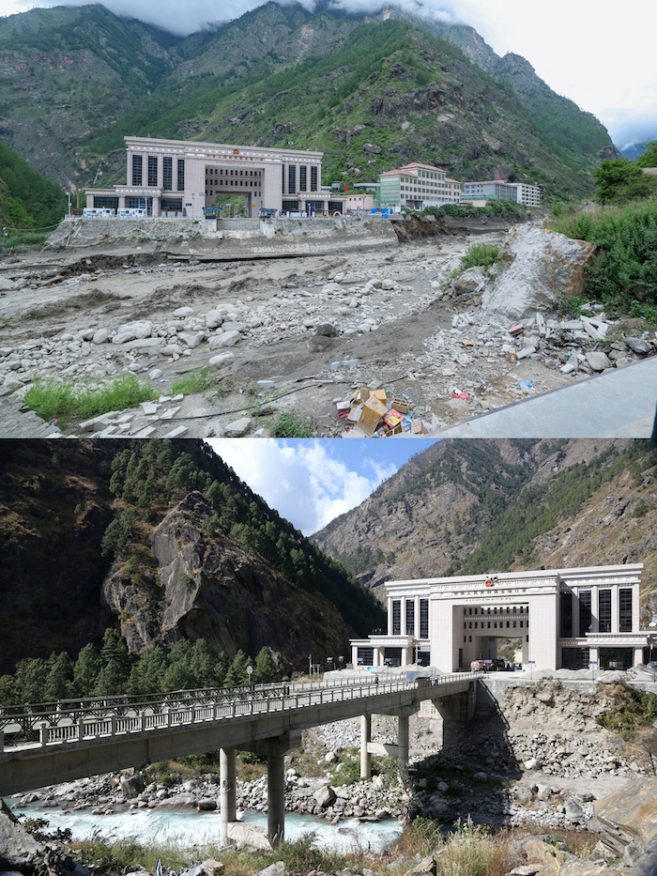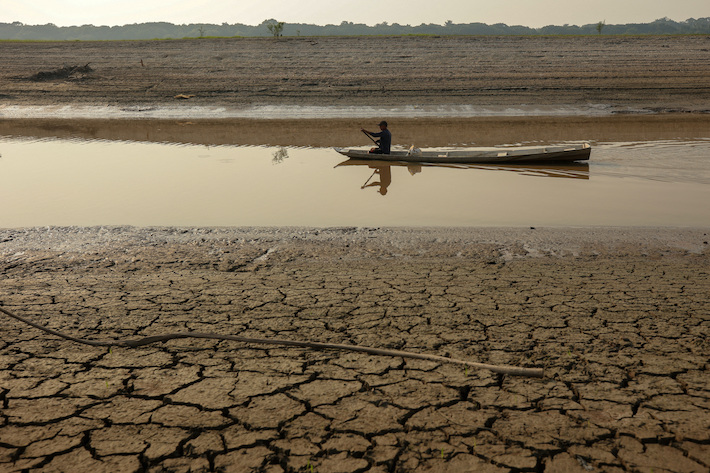Extreme weather events have become a regular feature of China’s wet season, and this week yielded more drama, with the Friendship Bridge between China and Nepal washed away on Tuesday.
Nine people died and over a dozen are missing, according to a report today (July 10) by India’s Financial Express, which said a supraglacial lake in China’s Tibet had burst and caused the flood, which washed away the bridge, plus people and vehicles on it and adjacent to the border zone.
Also today, more than 10,000 people were evacuated as 25 rivers in southwestern China exceeded safe levels on Thursday.
ALSO SEE: Shares of China’s Solar Firms Jump Amid Moves to End Price War
Forecasters said remnants of Danas – the fourth typhoon of the year – converged with East Asian monsoon rains were creating extreme rainfall and severe flooding.
Heavy rains also hit the capital, Beijing, with part of the sprawling Chaoyang district receiving 68.2 millimetres (2.7 inches) of rain in a single hour on Thursday morning, the Beijing Daily said.
Meteorologists say these intense downpours are linked to climate change and are posing increasing challenges as they threaten to overwhelm ageing flood defences, displacing millions and wreaking havoc on a $2.8-trillion agricultural sector.
“China has allocated 150 million yuan ($21 million) to “support relief efforts in regions [recently] affected by flooding, typhoons and geological disasters”, Xinhua reported on Wednesday.
The Ministry of Finance said those funds would go to six regions: Zhejiang, Fujian, Sichuan, Chongqing, the Xizang Autonomous Region and Gansu.
With China now in its main flood season, “certain regions have been hit frequently by flooding and geological disasters,” it said, noting that Typhoon Danas had hit several regions on the southeastern coast and caused secondary disasters.
“The funds will be used to support emergency rescue and relief efforts, focusing on search, rescue and relocation for residents affected by disasters. They will also be used for the detection of secondary disasters, and to repair damaged houses, among other tasks,” Xinhua said.
Record river levels in Guizhou, Sichuan
Ten southwestern rivers, including the Longyan, which flows through the densely populated Chongqing region, could burst their embankments and levees at any time, broadcaster CCTV warned, citing the water resources ministry.
The remaining 15 had exceeded levels at which they could burst their banks, but posed less of a risk, it added.
More than 24 hours of torrential rain took levels in the Chishui River of Guizhou province to their highest since records began in 1953, the broadcaster said, while the Xiaocao River in Sichuan province stood at its highest in 29 years.
More than 10,000 people were evacuated on Wednesday from cities in the provinces of Sichuan and Yunnan, state media said, as the East Asian monsoon rains pushed north from India.
One county in Yunnan recorded 227.8 mm (9 inches) of rainfall in 24 hours, for its highest total in a single day since records began in 1958.
Beijing health authorities warned that the combination of frequent downpours, high temperatures and humidity swells the risk of water and food contamination.
Glacial melt blamed for floods in Pakistan too
Meanwhile, record-breaking heat is causing glaciers in northern Pakistan to melt at a faster pace, which has led to landslides and flash floods in an adjacent part of the Himalayas.
At least 72 people have been killed and more than 130 injured in floods and heavy monsoon rains in the country since the rains began in late June, according to a report by The Guardian.
It said temperatures had risen as high as 48.5C (119.3F) in the Gilgit-Baltistan region – an unprecedented level for a region 1,200 metres above sea level and known for snow-capped peaks. The previous record of 47C degrees was set way back in 1971, it said.
Local officials have voiced alarm about the high temperatures, saying the region has over 7,200 glaciers and that such heat is “hostile” to people’s safety.
Former climate change minister Sherry Rehman claimed on X that Pakistan was now “the most climate-impacted country” and “at the epicentre of a global climate polycrisis,” but the government wasn’t doing enough to protect its citizens.
- Jim Pollard with Reuters
NOTE: Additional text (on floods in Pakistan) was added to this report on July 10., 2025.
ALSO SEE:
Floods Swamp Cities in Southwest China, And More Storms Due
Firms Underestimating Risks From Carbon-Fuelled Climate Change
Carbon Removals Not Growing Fast Enough For Climate Goals
Climate Change Has Cost China $32 Billion in Just One Quarter
Decline in China’s Solar Output Seen Due to Oversupply – PV Mag
China’s Billion-Ton Coal Expansion Plan Sparks Methane Fears
Booming Solar Puts 2030 Renewable Energy Goals ‘Within Reach’
























